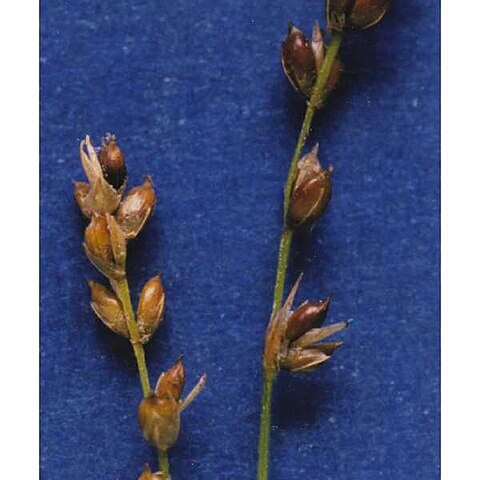Plants with loose, branching system of slender, pale brown rhizomes. Culms very slender, nodding, 15–60 cm, exceeding leaves, scabrid. Leaves: basal sheaths pale brown abaxially, inner band white-hyaline, truncate at summit; ligules broader than long; blades mid to dark green, flat, 15–30 × 0.75–1.5 mm, scabrid. Inflorescences 1.5–2.5 cm × 3–5 mm; proximal bract 5–20 mm; distal bracts scalelike. Spikes 2–4(–5), proximal separate, distal aggregate, globose, 3–5 × 2–4 mm. Pistillate scales white-hyaline with green center, ovate, narrower and shorter than perigynia, apex acuminate. Perigynia 1–6, pale green, often brown or even purplish in age, plump, 2.25–3 × 1.3–1.5 mm, membranous, shiny. Achenes red-brown, oblong-elliptic, 1.5–1.75 × 1 mm, glossy. 2n = 70.
Soft, slender, the stems 1–4 dm, scattered on slender, branching rhizomes; lvs flat, 1–2 mm wide; spikes 2–5, sessile, separate or the upper approximate, 3–6 mm, with 1– (–6) perigynia and 1–3 terminal staminate fls; bract obsolete, or filiform and to 2 cm; scales triangular-ovate, stramineous to white-hyaline except the green midrib, equaling or more often shorter than the perigynia; perigynia ellipsoid, 2–3 mm, densely white-punctate, nearly round in cross-section, the margins appearing merely as 2 stronger nerves, the minute beak 0.2 mm; achene thick-lenticular, filling the perigynium, its style-base semipersistent as a slender apiculus; 2n=70. Bogs and wet woods, usually in shade; circumboreal, s. to Pa., Ind., Minn., Utah, and Calif.

